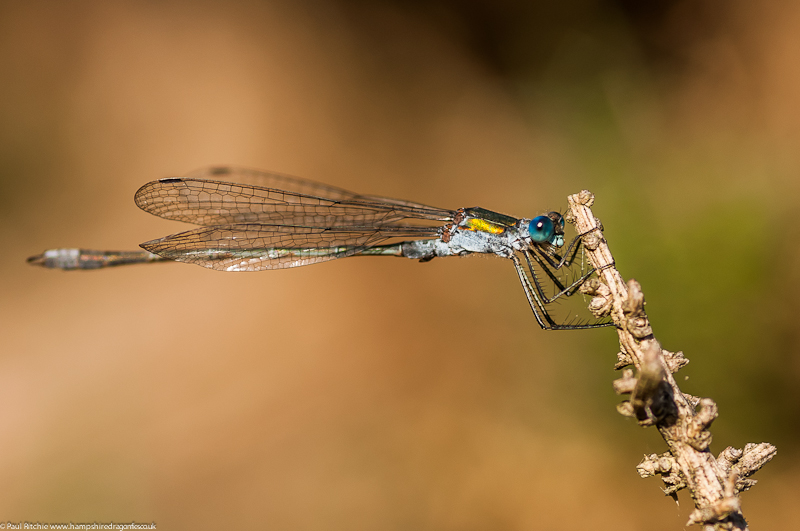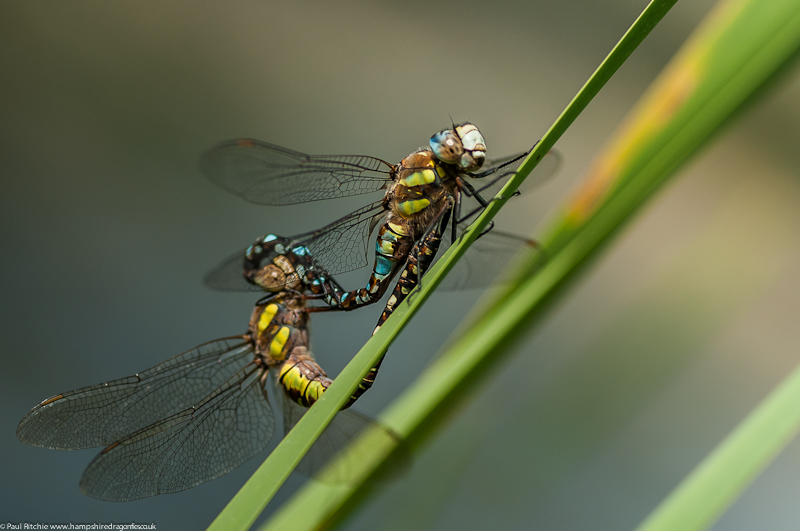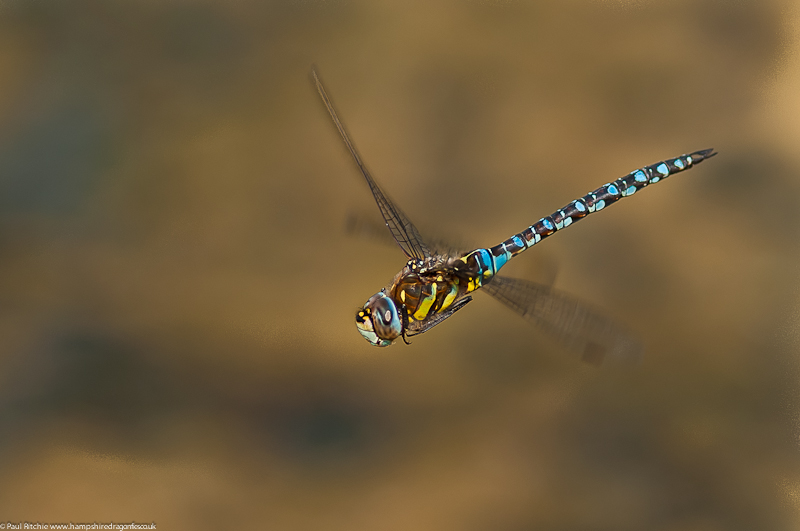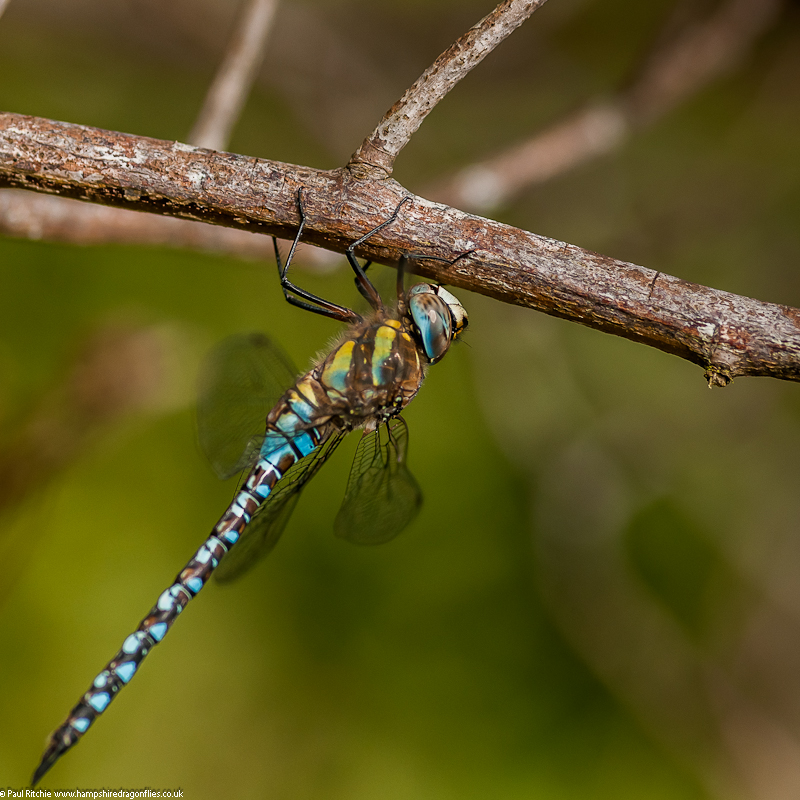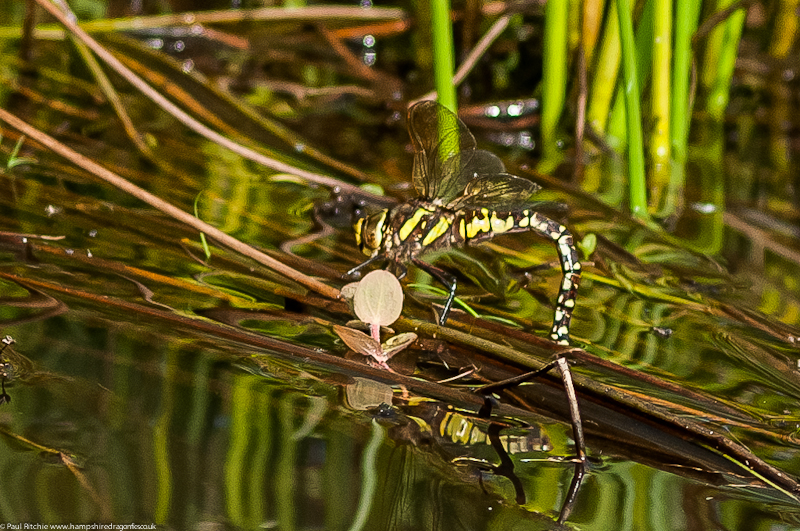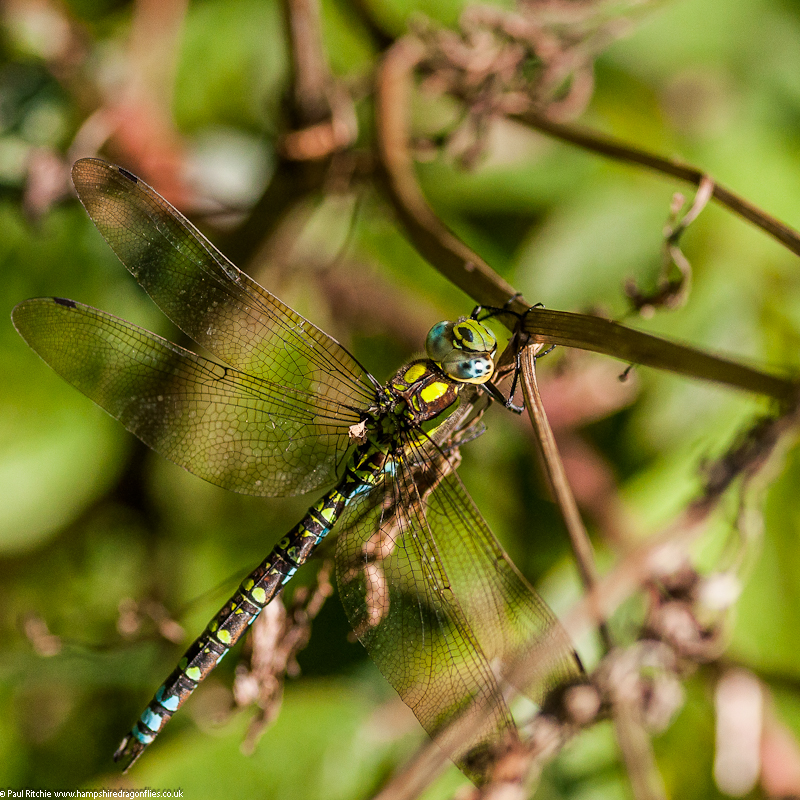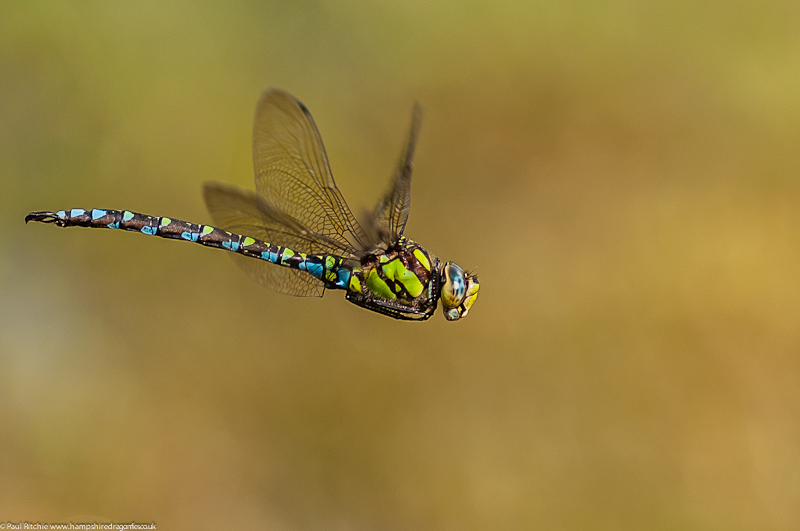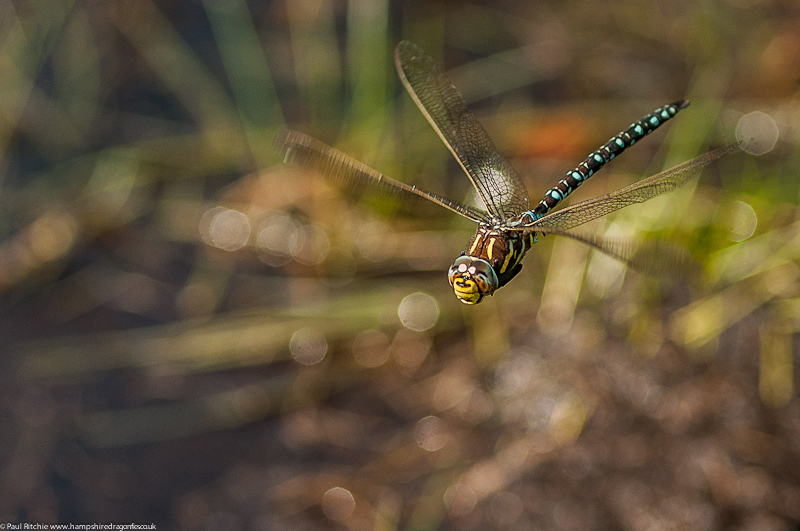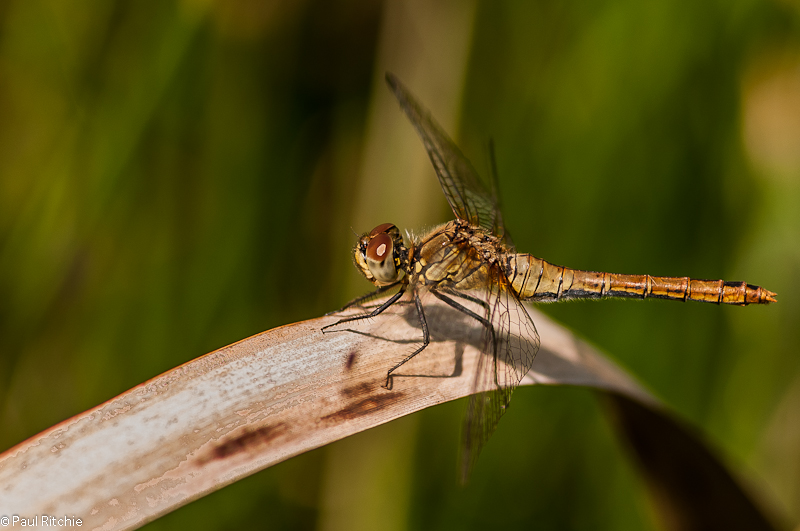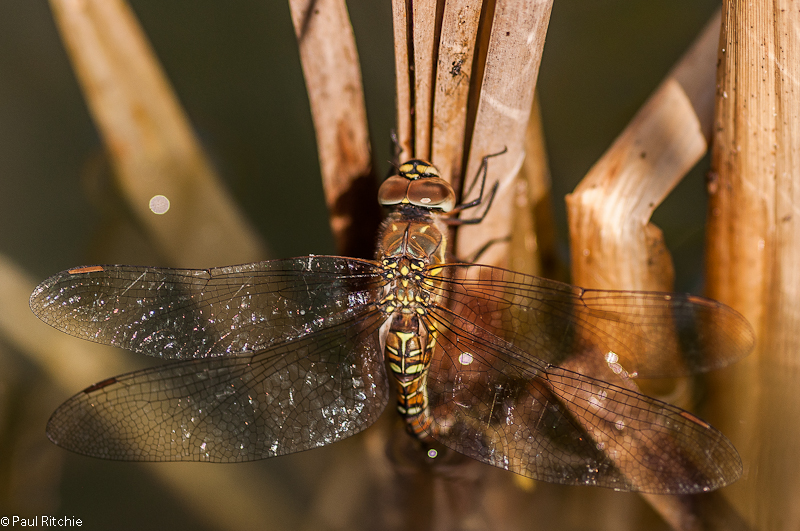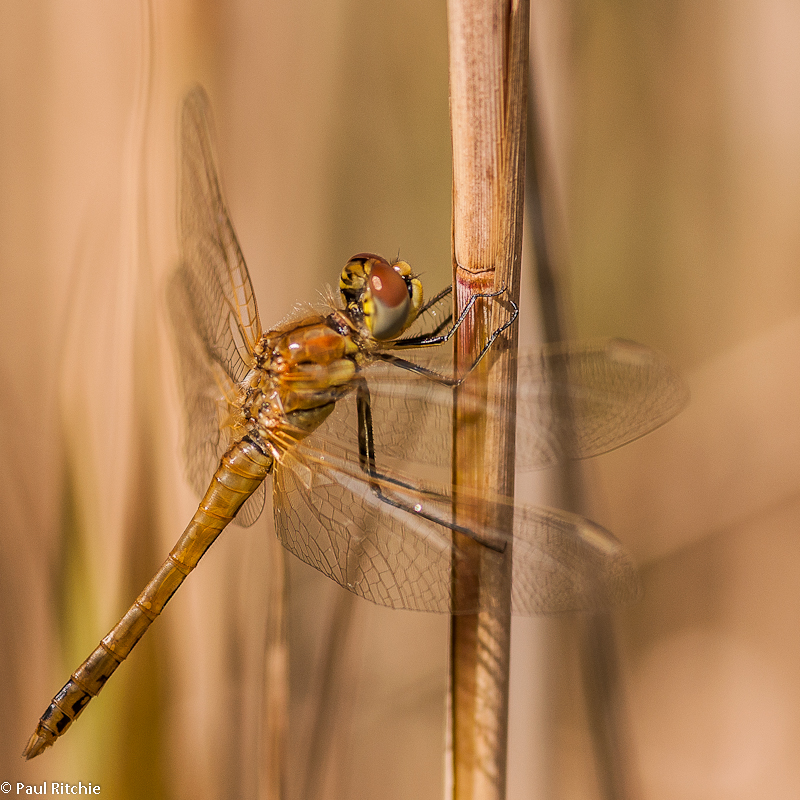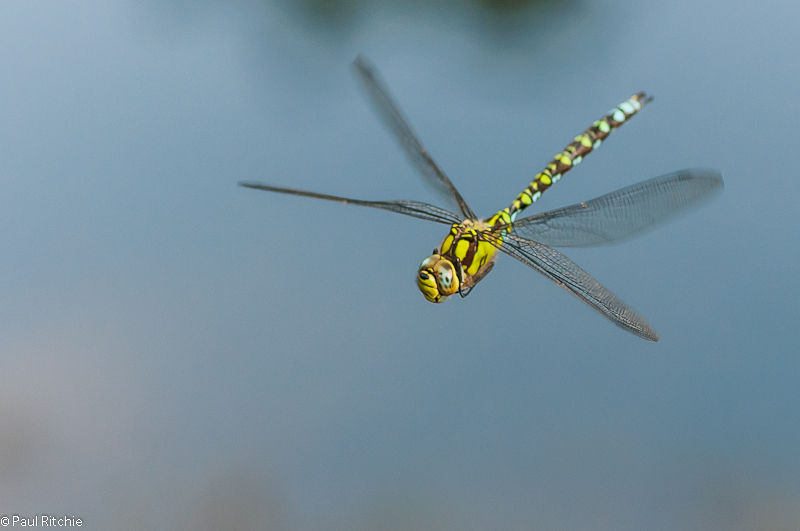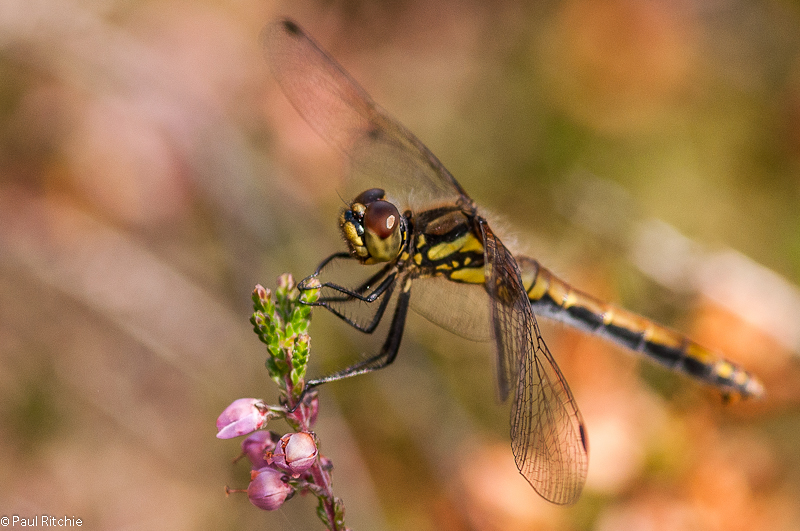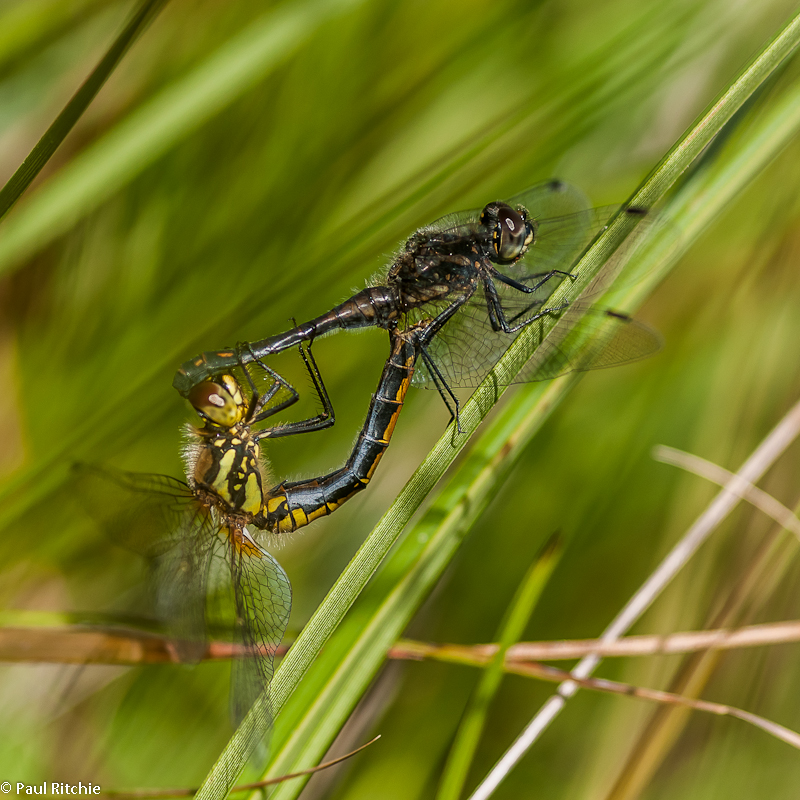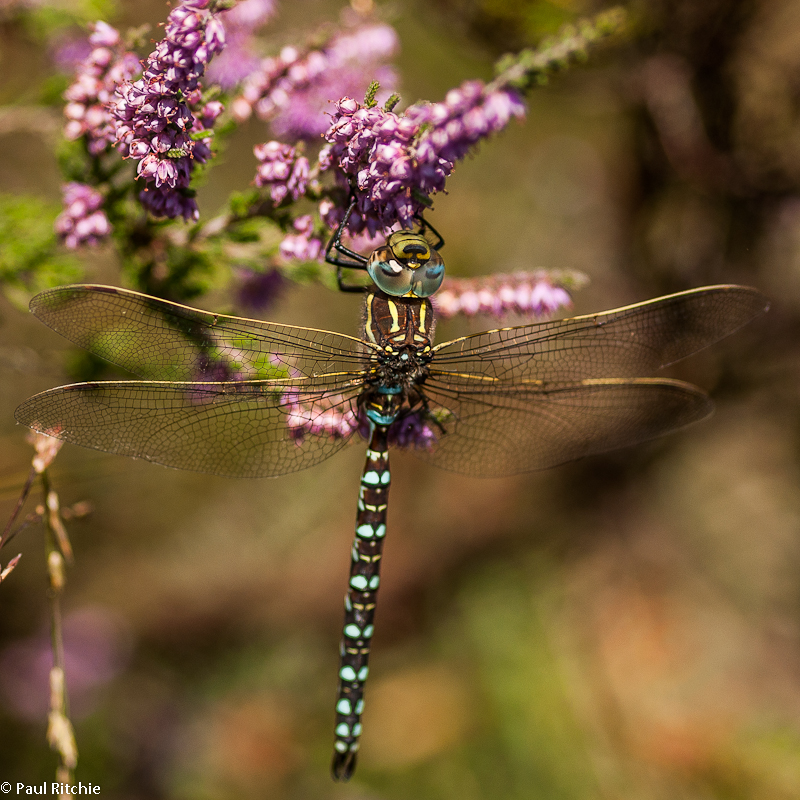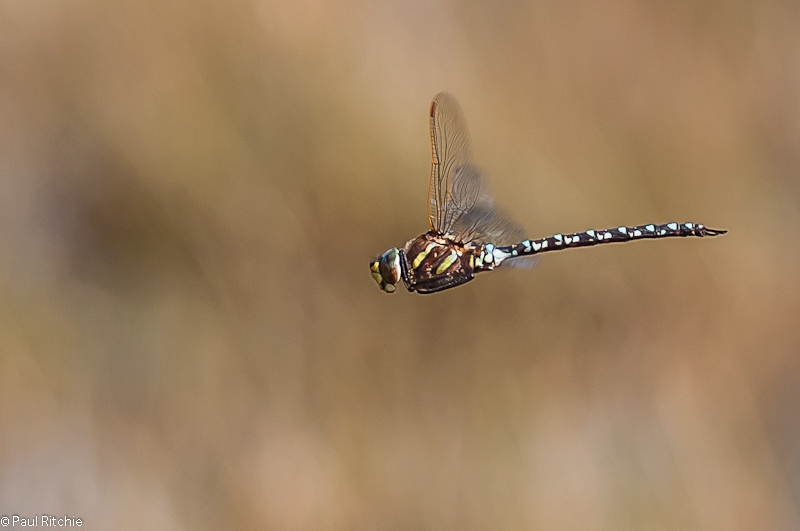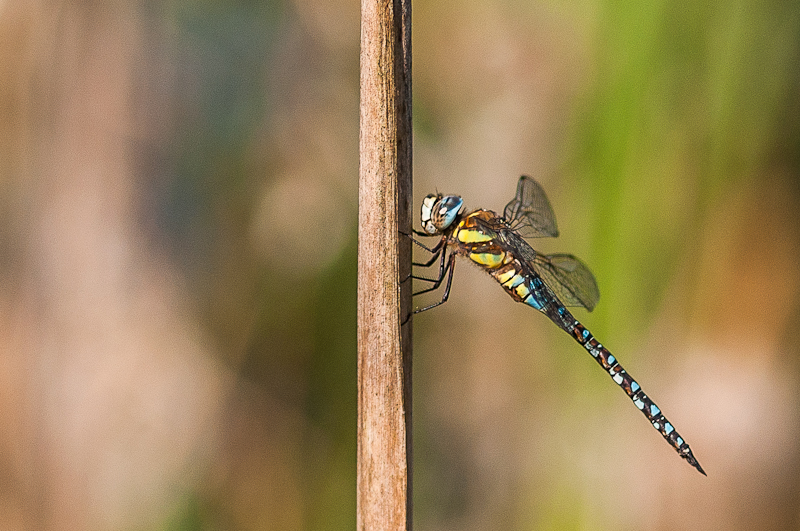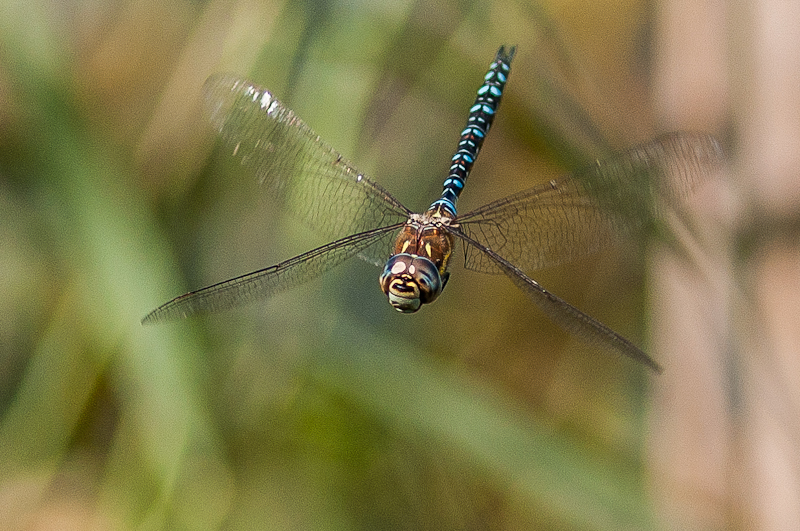I get a little bit jittery this time of year, knowing it won’t be too long before the temperatures drop enough overnight to produce a frost. Already certain parts of Oxfordshire have dropped enough for a ground frost.
However I’m feeling optomistic enough to see out the month and hopefully continue on through October. After the summer we’ve all had, I feel we deserve it!
So continuing with my late summer jaunts of favourite haunts, I took an early afternoon trip to Badminston for some more time with the Migrant Hawkers. Ignoring the main path I choose the back way to cross the gate. The walk up Hawker Alley didn’t produce any – just a few Common Darters and Common Blue Damselflies to start the day.
My main area for today was the southern basin, perfectly sheltered from the stiff breeze and bathed in sunny moments which created the perfect micro-climate for more Common Blue Damsels, Ruddy Darters, a lone Male Emperor and a fine population of Migrant Hawkers.
After watching for a few moments I crossed over the small causeway to the bank and caught sight of an immature Red-veined Darter, the wings still glistening in their softness. He proved a little hard to pin down, but I did manage a record shot.
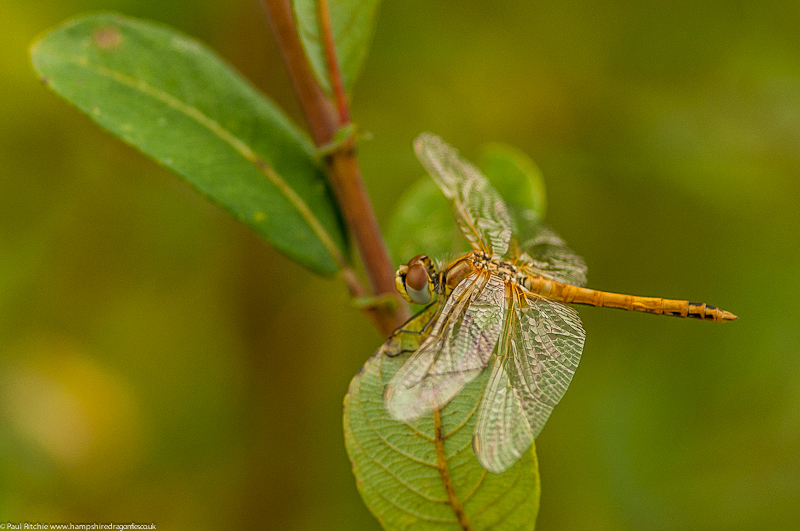
Back over the causeway I stood near the reeds hoping for a Migrant opportunity, watching as several pairs flew past in cop and hoping a pairing would land close.
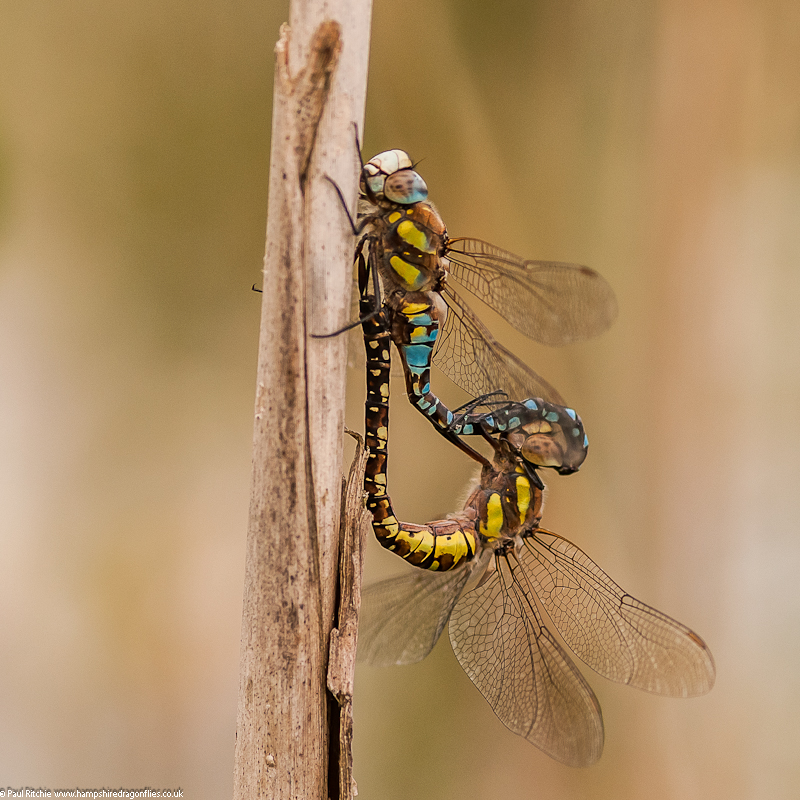
Finding that RVD raised my curiosity enough to scour the rest of the site, and sure enough, over in the scrub to the north, I found a beautiful female. She led me on a chase, but I was determined and gradually I managed to approach close enough for a reasonable shot.

I hadn’t expected any to still be around a month after their first emergence and ironically I received an e-mail the following day from Paul Brock who had found a couple the previous Thursday (13th September).
Back at the basin I spotted the male again and gave chase across the causeway, but he flew out across the water. No matter, just to my left was another Migrant pair perched and a male about 20cm above.

I returned to Badminston on Tuesday just in case and sure enough found a pristine young male Red-veined Darter in the ditch.

He proved to be the only one I saw that day despite a full search of the site. Ruddy and Common Darters were present in small numbers across the plateau, annoyingly preferring to perch on the substrate.
On the large shallow pool to the south a male Emperor was holding court, prompting me to wonder whether this would be my last sighting of this magnificent beast this season?
Over in the basin activity was somewhat subdued compared to yesterday, but I did manage another Migrant opportunity.
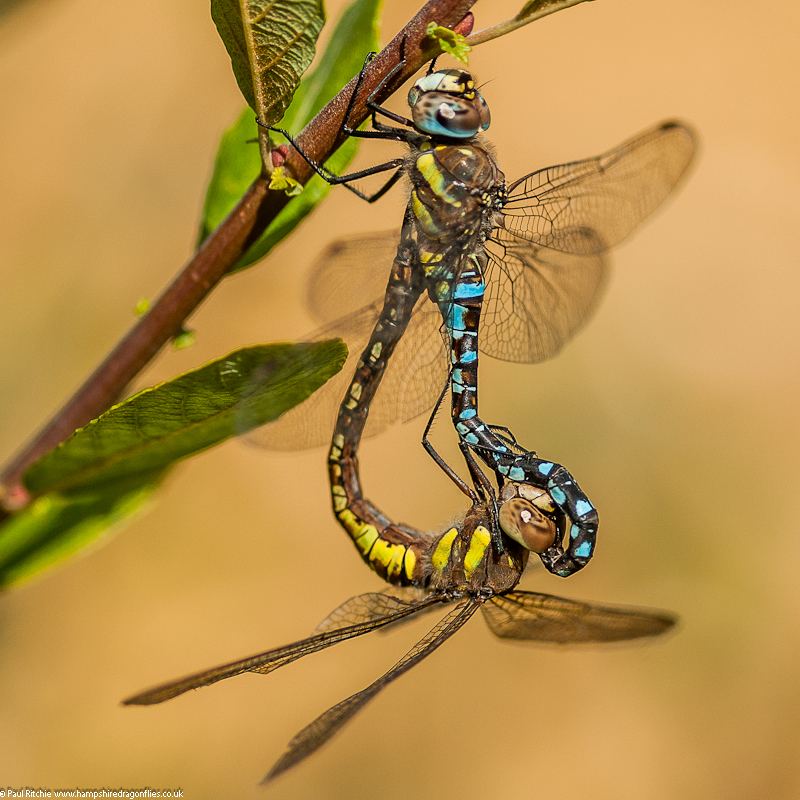
They split shortly afterwards. The sight through the viewfinder was of the female detached at the abdomen, a perfect opportunity for an unusual shot – which I missed entirely!
I returned across the plateau and found a small pool I’d previously missed, but like all the shallow pools here have now reduced to nothing more than puddles and were therefore devoid of any activity. Even a solo trip of the difficult north section produced nothing to get excited about.
On Wednesday I returned my favourite watering hole, meeting Paul Brock just after noon at a location he was familiar with, but had never visited the pond itself. The worry that nothing would show was soon soon forgotten with the appearance of the male Common Hawker. I’m presuming it’s the same individual from a week ago; certainly the flight pattern, behaviour and preferred area was identical.
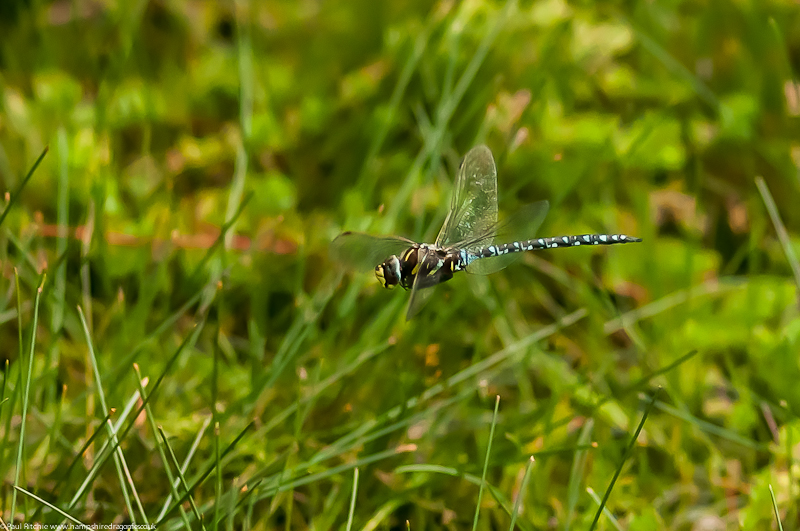
His appearance was once again sporadic, often disturbed by clashes with the resident Southern Hawker, but sure enough he would reappear along the back channel, possibly sensing the past presence of an ovipositing female.
Luckily we and he didn’t have too long to wait, for there she was – back at her favourite inlet.

Much like the male, her visits were infrequent – but she did pass by close enough to get an acceptable in-flighter – certainly better than the one I’d managed last week.

I returned to the pond on Saturday afternoon; the quick jaunt which usually takes half-an-hour took an hour and a half. At least it was worth it!
The activity on my arrival was better than it had been for a long time, with plenty of Common and Black Darters, Common Blue and Emerald Damselflies all over the water and making the most of the sun. Also present were a couple of Migrant Hawkers, at least 3 Southern Hawkers and a Common Hawker – all males.
This provided more entertainment that is usual for late September and I placed myself at my old favourite perch, slightly at odds with the harvest sun but perfect for fly-bys and watching the frequent dog-fights between the triumvate of Hawkers; the Common well matched to the Southern who would finish his battles by harrasing the Common Darters before returning to his patrol.
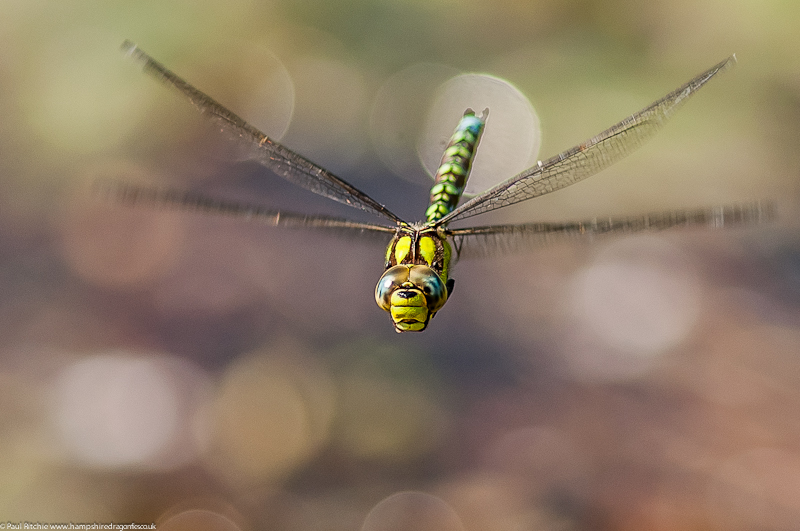
On two occasions the Common would take over the Southern’s patrol, allowing some fine close glimpses. I presume this is our resident, who has chosen the pond for the past fortnight, by the worn rattle he produced in-flight, although his territory had expanded to include most of the south side. This was fine for me.
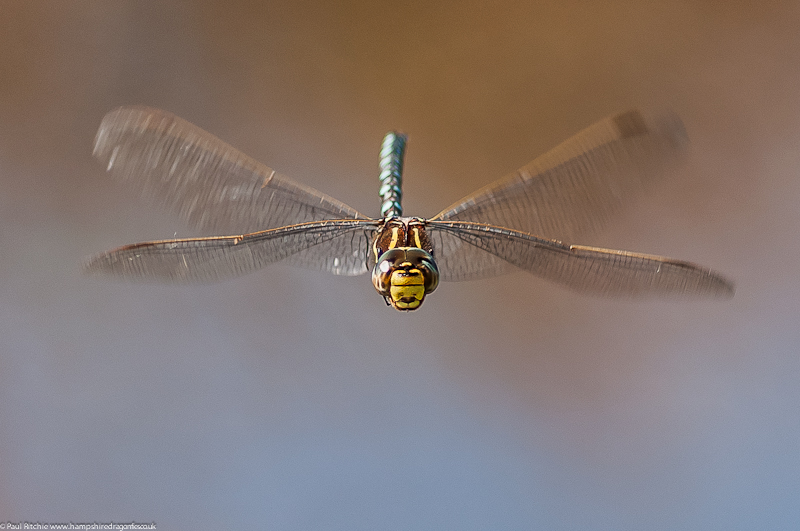
The Migrants pretty much kept themselves to themselves, each choosing a small section of the pond away from the agressive Southerns. Two of them kept close to the island, investigating the reeds and weaving in & out in their typical fashion. This one chose a small territory in the south-east corner.
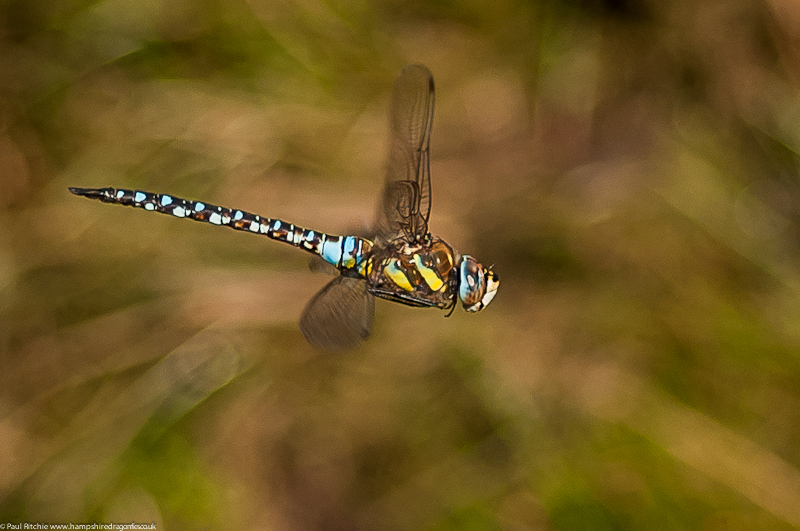
So a fabulous time despite the chill, and an activity level worthy of a fine summer’s day.


